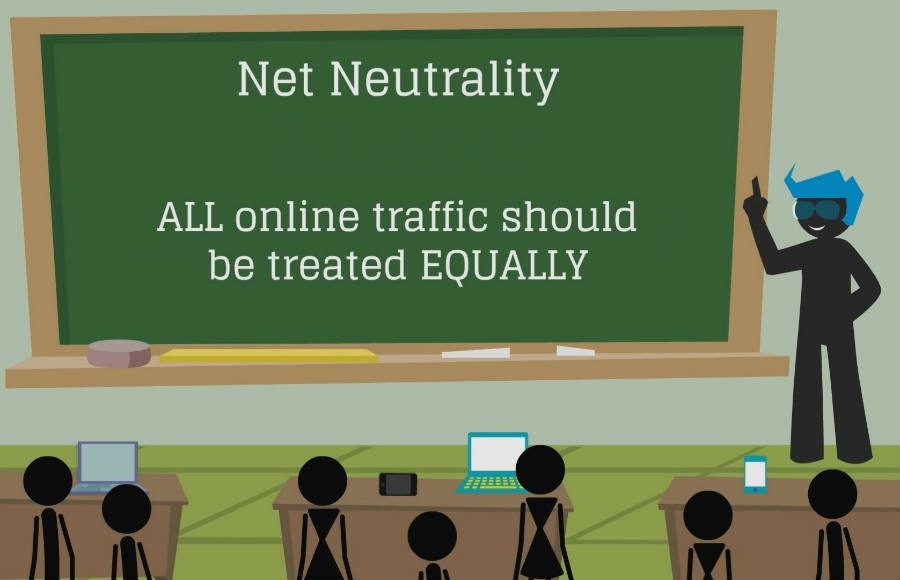Thousands of identical comments supporting the Federal Communications Commission’s move to repeal net neutrality rules flooded their official website on Wednesday. The filings are attached to real people’s names and addresses who denied posting them in the first place.
Open internet controversy has been a thing for quite some time now, although it recently came under the spotlight again due to the new FCC leadership’s intentions to overturn legislation and loose regulations on internet companies, compromising consumer privacy and service quality in the process.
The fight for net neutrality is long-spanning and ongoing, so at this point, some people might have lost track already of what is going on and why. Here we offer a quick recap and a timeline of events on how this all started up until now.
Title II reclassification: How it all began
Former FCC Chairman Tom Wheeler was a fairly progressive government official who led the commission towards fairer standards across the board during the Obama era, always with the consumers’ best interests at heart.
After years of legal battles with internet service providers, mobile carriers, and other internet firms, Chairman Wheeler managed to win a legal battle in court that resulted in the internet being reclassified under Title II of the Communications Act of 1934.
Under this title, the internet would now be considered a utility to the government’s eyes, thus making it subject to regulation and oversight by the FCC. This allowed the Commission to enforce net neutrality to the industry by means of proper legislation.
Trump election and new FCC
Net neutrality is the principle that dictates that all data should be treated equally, no exceptions. The new FCC Chairman Ajit Pai, however, did not see it that way during his time as commissioner under Wheeler, and definitely does not see it that way now that he is in command.
He considers there was no such thing as an unfair industry or that ISPs engaged in questionable practices to favor some services over others. Since these open internet rules are unnecessary from his perspective, he is starting to fight to go back to Title I classification and loosen up a little on regulation.
By doing this, he says, the industry will flourish as companies are allowed to implement more strategies to attract consumers. Competition drives growth and that is exactly what he is trying to achieve: a landscape in which consumers have more options from which to decide.
Online activists vs fake bot-supporters: where we are now
The thing is that not all people have such short-term memories, and they remember what it was like before. Letting carriers and ISPs loose on the playground also means they can potentially bring back data caps, throttling, and access and sell your information to third parties or use it themselves without your permission.
For this reason, Last Week Tonight’s host John Oliver made a call to action to all consumers. He prompted people last Sunday to go to the FCC’s page on the issue and comment in support for net neutrality rules, but the swarm of advocates was quickly met with a broken down site.
They did not break it down, the FCC did, although they alleged it had been subject to a DDoS attack or a threat similar in nature. Before that happened, some news outlets had noticed that a large amount of comments seemed to be the same, and that they were probably part of a bot network set to favor the motion.
Now, just this Wednesday, users reported a new batch of more than 100,000 comments, this time tied to real names and addresses, that had been seemingly published in alphabetical order. All comments read the same text:
“I URGE THE FEDERAL COMMUNICATIONS COMMISSION TO END THE BUREAUCRATIC REGULATORY OVERREACH OF THE INTERNET KNOWN AS TITLE II AND RESTORE THE BIPARTISAN LIGHT-TOUCH REGULATORY CONSENSUS THAT ENABLED THE INTERNET TO FLOURISH.”
What’s next in the battle for net neutrality?
Nobody knows where this information came from, although outlets like Gizmodo and Mashable tried to backtrack on the strategy and tie it to organizations who had been responsible of schemes like this in the past. The Verge and ZDNet tried to confirm with the people themselves, and they all denied knowing about the posts.
Strangely, the FCC has no knowledge of this deluge of comments nor did it register a system failure due to an overload in filing submissions like it did in days past. They also refused to comment on the possibility of a fake bot network scheme to support Title I reclassification.
The Commission votes on this issue this next May 18. If it passes, the discussion will go public and commissioners will hear out dissenting and supporting voices over the next few months before reaching a concrete decision. In the meantime, the comments page will be up until mid-August.



